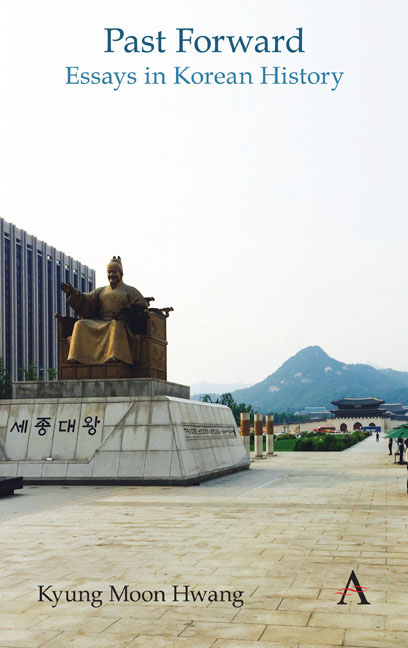Book contents
- Frontmatter
- Contents
- List of Figures
- Foreword
- Chronologies of Korean History
- Themes
- Acknowledgments
- Note on Romanization and Spelling
- Part I Circulating History
- Part II Durable Traditions
- 8 Marking the New Year
- 9 Slavery, Bondage, and Social Hierarchy
- 10 Marriage, Adultery, and Concubinage
- 11 Buddhism and Korean Identity
- 12 Christianity's Rapid Rise
- 13 Civil–Military Balance in Politics
- 14 Regionalism in Elections
- 15 Yeongnam's Strong Presidential Politics
- Part III Ancient Remains
- Part IV Dynastic Depths
- Part V Modern Origins
- Part VI Challenges of Nationhood
- Part VII History Makers
- Part VIII External Presences
- Part IX Trials of Modernization
- Part X Gripped by the Past
- Index
8 - Marking the New Year
from Part II - Durable Traditions
- Frontmatter
- Contents
- List of Figures
- Foreword
- Chronologies of Korean History
- Themes
- Acknowledgments
- Note on Romanization and Spelling
- Part I Circulating History
- Part II Durable Traditions
- 8 Marking the New Year
- 9 Slavery, Bondage, and Social Hierarchy
- 10 Marriage, Adultery, and Concubinage
- 11 Buddhism and Korean Identity
- 12 Christianity's Rapid Rise
- 13 Civil–Military Balance in Politics
- 14 Regionalism in Elections
- 15 Yeongnam's Strong Presidential Politics
- Part III Ancient Remains
- Part IV Dynastic Depths
- Part V Modern Origins
- Part VI Challenges of Nationhood
- Part VII History Makers
- Part VIII External Presences
- Part IX Trials of Modernization
- Part X Gripped by the Past
- Index
Summary
In ancient times, civilizations around the world figured out the basics of the earth's relationship to the sun and the moon, and from this, they learned to count the days, months and years. But other factors also played a role, including political and religious power, and hence most methods of marking the New Year actually have not corresponded to scientific principles.
One of the exceptions is the Persian New Year (Nowruz), which comes on March 20, the date of the vernal equinox. This is when the sun's most direct rays cross the equator along the earth's northward tilt, and hence it technically marks the beginning of spring (or the fall, in the southern hemisphere).
Koreans traditionally recognized the vernal equinox as well, as the start of one of 24 seasonal periods (jeolgi). But this did not signal the New Year, which was set by a calendar that combined measurements of both the moon and the sun. What is normally called the Lunar New Year (Seollal), the country's most important holiday, is based on a complicated system that counts a year as having passed through 12 of the moon's 29-to 30-day cycles. But as with other traditional holidays based on the lunar calendar (such as Buddha's Birthday or the Chuseok harvest festival), the date differs slightly every year, because 12 moon cycles fall several days short of the 365.25 days that it takes for the earth to revolve once around the sun.
In sum, because Koreans customarily have used multiple methods to mark the passage of time, the New Year has a complicated history. More than a century after the formal adoption of the Gregorian, or “Western” (solar) calendar, in fact, there remain two distinct New Year's Days in Korea, with January 1st being in many ways less important. The first new New Year, on January 1, 1896, came somewhat suddenly in the middle of the 11th month of the lunar year equivalent to 1895. This was decreed as part of the revolutionary changes implemented by the Gabo Reforms, which began in the summer of 1894 and ironically ended soon after the inauguration of the new solar year of 1896.
- Type
- Chapter
- Information
- Past ForwardEssays in Korean History, pp. 22 - 23Publisher: Anthem PressPrint publication year: 2019



